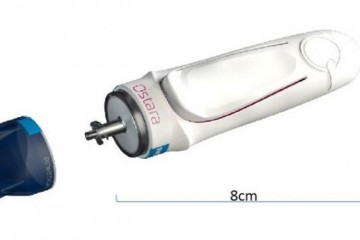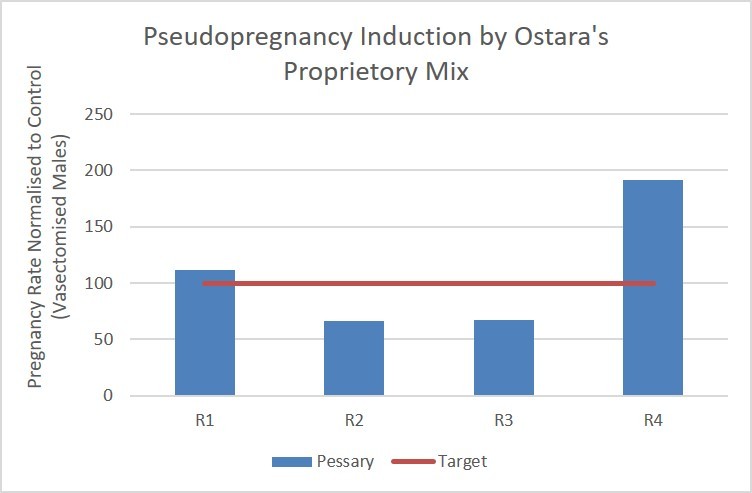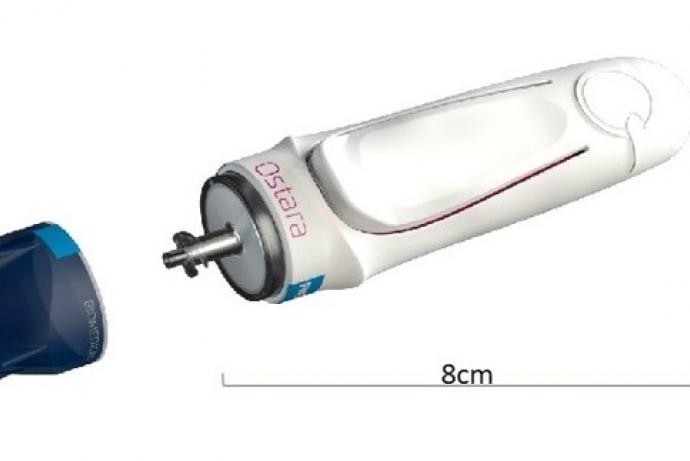A novel product for reducing animal numbers in the production of transgenic mice

At a glance
R
- Replacement
Overview
The team at Ostara Biomedical is developing a product designed to streamline procedures and reduce the number of animals used in the production of transgenic mice. The number of transgenic mice, generated primarily as models of human disease, has risen in recent years to the extent that nearly half of all animals in research are now those in transgenic mouse breeding programmes. To produce these mouse models, genetically manipulated embryos are transferred to recipient mothers to produce litters of transgenic founders from which transgenic lines can be bred. Current practice requires the induction of pseudopregnancy in prospective recipients, thereby enabling them to become hormonally and physiologically competent to enable the implantation of transferred embryos. This is an inefficient process and requires large numbers of male and female mice.
Ostara Biomedical is addressing this issue by developing a vaginal pessary designed to efficiently induce pseudopregnancy in female mice, effectively replacing the need for vasectomised males which are currently widely used for this purpose. Their pessary-based innovation aims to eliminate the need to undertake male sterilisation operations. It also has the potential to significantly reduce the number of females required to ensure the timely generation of sufficient pseudopregnant recipients through the increased efficacy and reliability of this approach
They have worked extensively with partners to develop the proprietary technology, but now need to validate the approach with collaborators routinely inducing pseudopregnancy using vasectomised males. Through the CRACK IT Solutions technology partnering scheme they have identified multiple potential partners but have selected to work with the Cancer Research UK Transgenic Service. This collaboration would allow them to capitalise on their expertise and excellent animal facilities to support the evaluation and further refinement of their prototype vaginal pessary system.
Full details about this CRACK IT Solution can be found on the CRACK IT website.
Impact
This study aimed to validate the Ostara Biomedical vaginal pessary system as a tool to (i) replace the use of vasectomised/sterile males in pseudopregnancy induction (essential for embryo implantation) and (ii) to further enhance embryo implantation rates, in mice.
During early testing it became evident that further optimisation of the pessary manufacture and formulation would be necessary to preserve the activity of the active ingredients. A new partnership was established with ThioMatrix to complete this aspect of the project. In parallel, in vivo formulation testing was carried out in collaboration with Cancer Research UK’s (CRUK) Transgenic Service and additional animal units to explore the efficacy of three different active ingredient combinations. The results demonstrated that alternative combinations of additional active ingredients yielded similar or enhanced rates of pseudopregnancy induction in comparison to the original formula (figure 1), increasing the number of active ingredients available for formulation. This is critical to de-risking future product development and bringing it closer to commercialisation.

Figure 1: Pseudopregnancy induction by Ostara’ proprietary mix of active ingredients. R1 (n=14 pessary, n=13 control) is Ostara’s original recipe, R2 (n=28 pessary, n=27 control) and R3 (n=18 pessary, n=18 control) are revised recipes yielding only 65% of the control (vasectomised males) success rate. R4 (n=18 pessary, n=18 control) is a revised recipe that exceeded the vasectomised male-induced pregnancy rate.
Working with Marble Product Design, Ostara Biomedical has also developed an ergonomic, safe and reliable delivery mechanism for the vaginal formulation (figure 2). Although not directly funded by the NC3Rs, CRACK IT Solutions funding allowed Ostara Biomedical to utilise other resources to develop the applicator in parallel to the formulation, significantly shortening the product development time. This has received positive user feedback from Ostara Biomedical’s partner unit at the University of Leeds, particularly in terms of ease of use. Work is ongoing to quantitatively assess the impact on the welfare of the animals in comparison to the traditional use of vasectomised males; however initial screening (based on animal behaviour and visual vaginal tissue observations by unit staff) suggests that there are no adverse effects.

Figure 2: Ostara Biomedical’s proprietary device for vaginal delivery of the formulation. The outer body contains a flexible air bladder which is depressed by the user, delivering a metered dose of the formulation into the mouse vagina.
Overall this product development study has improved manufacturing processes and increased the stability, reproducibility and efficacy of the formulation, leading to the progression of the product towards market. Commercialisation of Ostara Biomedical’s vaginal delivery-based innovation could significantly impact on the use of animals in breeding programmes and research. Across the EU, approximately 1.9 million mice per year are used in the production of pseudopregnant mice in preparation for embryo transfer (Seventh Report from the Commission to the Council and the European Parliament on the Statistics on the number of animals used for experimental and other scientific purposes in the member states of the European Union, COM(2013)859). Ostara estimate that the vaginal formulation could reduce the number of mice in pseudopregnancy generation by 50-70% through the replacement of males and improvements in pseudopregnancy induction in females. This estimation would result in approximately 950,000 fewer mice being used in pseudopregnant production across the EU per year. An additional benefit will be that males will no longer need to be surgically sterilised, impacting on the severity level of the production of pseudopregnant mice for research. This product will be of interest to animal breeders and small research units alike.
The NC3Rs CRACK IT Solutions funding has not only enabled the validation and development of Ostara Biomedical’s vaginal delivery system, but it has also been instrumental in securing additional funding to continue this work stream and engage with potential customers in Europe and USA.
Ostara Biomedical say:
“The CRACK IT Solutions award has been instrumental in enabling Ostara to develop a pseudopregnancy induction alternative to vasectomised/sterile males, thereby effectively replacing the numbers of animals used to this end. In particular, the flexibility of the award has allowed Ostara to progress the product in directions not envisaged at the start of the project, thus bringing the product closer to market. The relationship between Ostara and its Solutions partner CRUK, generated through CRACK IT Solutions funding, has facilitated and provided further collaboration opportunities.”
To find out more about the vaginal pessary system visit Ostara Biomedical’s website.
